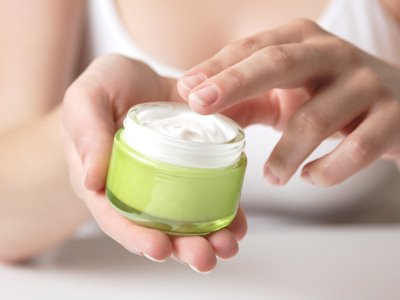A new study found that cosmetic skin creams cannot “penetrate” the skin as claimed by many manufacturers.
Many pharmaceutical brands claim that nanoparticles in their products give their creams a “deep penetrating action”.
But scientists at the University of Bath found that such claims are “patently” untrue and that even the tiniest of nanoparticles do not penetrate the skin’s surface.
Their work suggests that creams are simply deposited into creases in the skin and do not carry nutrients deep under the surface.
Professor Richard Guy, a professor of Pharmaceutical Sciences who led the research, said: “Previous studies have reached conflicting conclusions over whether nanoparticles can penetrate the skin or not.
“Using confocal microscopy has allowed us to unambiguously visualize and objectively assess what happens to nanoparticles on an uneven skin surface.
“Whereas earlier work has suggested that nanoparticles appear to penetrate the skin, our results indicate that they may in fact have simply been deposited into a deep crease within the skin sample.
“The skin’s role is to act as a barrier to potentially dangerous chemicals and to reduce water loss from the body. Our study shows that it is doing a good job of this.
“So, while an unsuspecting consumer may draw the conclusion that nanoparticles in their skin creams, are <<carrying>> an active ingredient deep into the skin, our research shows this is patently not the case.”
The research, published in the Journal of Controlled Release, studied particles less than one hundredth of the thickness of a human hair which are used in sunscreens and some cosmetic and pharmaceutical creams.
The scientists used a technique called laser scanning confocal microscopy to examine whether fluorescently-tagged polystyrene beads, ranging in size from 20 to 200 nanometers, were absorbed into the skin.
They found that even when the skin sample had been partially compromised by stripping away layers, the nanoparticles still did not penetrate the skin’s outer layer, known as the stratum corneum.
Prof. Richard Guy added: “We did the study very carefully but not once we were able to determine that that were able to cross the outside layer of the skin which is out protective layer.
“There is no magic associated with particles being able to wriggle across the skin, they are just too big to do that.
“We actually have lots of nanoparticles inside us that don’t get out.”
He said that the research did however help to prove that potentially harmful ingredients, such as those used in sunscreens, can not be absorbed into the body, alleviating fears.
He also suggested that it may be possible to design a new type of nanoparticle-based drug that can be applied to the skin to give a controlled release of a drug over a long period of time.
